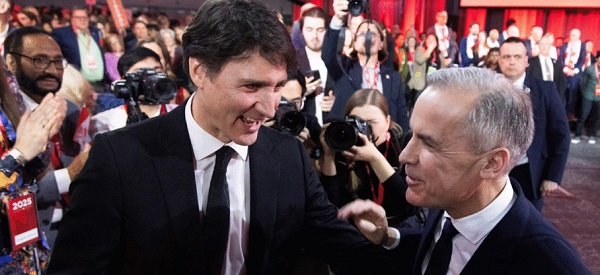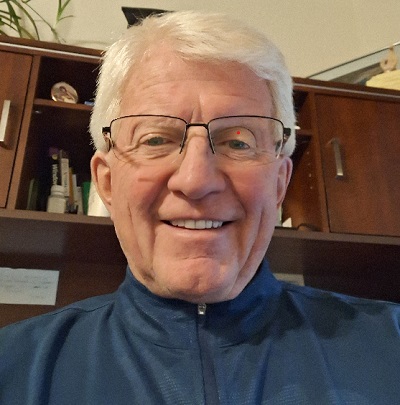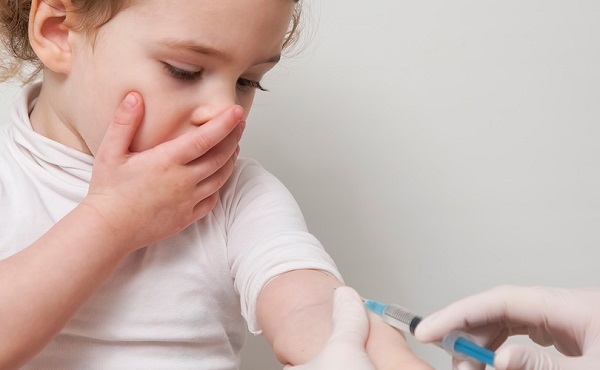Business
LEGO to invest $366 million on major U.S. expansion

Quick Hit:
The LEGO Group is expanding its U.S. footprint with a $366 million investment to build a 2-million-square-foot warehouse in Virginia. The move will create 305 new jobs and deepen the company’s commitment to the United States.
Key Details:
-
The new warehouse and distribution center will be built in Prince George County, complementing LEGO’s upcoming factory in neighboring Chesterfield County that’s set to open in 2027.
-
Virginia secured the project through a $2.53 million Commonwealth Opportunity Fund grant, with additional support from state programs including the Virginia Jobs Investment Program and the Port of Virginia’s economic development incentives.
-
LEGO’s Chief Operations Officer Carsten Rasmussen said the center will “bring greater flexibility” to the company’s North American supply chain and reduce both customer wait times and environmental impact.

Diving
LEGO is expanding in Virginia! This new $366M investment in Prince George County creates 305 new jobs, strengthening our partnership and Virginia’s status as the top state for business. Virginia is where global companies and iconic brands like @LEGO_group can thrive, grow, and… pic.twitter.com/6rzydVIlRZ
— Glenn Youngkin (@GlennYoungkin) May 8, 2025
Deeper:
The LEGO Group will invest $366 million to build a 2 million-square-foot warehouse and distribution center in Prince George County, Virginia, a move expected to create 305 new jobs, according to a Thursday announcement by Governor Glenn Youngkin.
The project marks another milestone in LEGO’s ongoing U.S. expansion, following the 2022 announcement of its Chesterfield County factory currently under construction. The company’s operations in Virginia are projected to create more than 2,000 jobs total when both sites are fully up and running.
“The LEGO Group is not just a household name, it’s a symbol of creativity, innovation, and quality that resonates globally,” said Governor Youngkin. “Three years after choosing Virginia to establish its U.S. manufacturing plant, the LEGO Group’s decision to expand into Prince George County is an exciting new chapter in this partnership.”
LEGO’s global Chief Operations Officer, Carsten Rasmussen, said the regional distribution center “will shorten our supply chain in the region–reducing lead times for our customers as well as our environmental impact.” He praised the continued partnership with the Commonwealth.
State economic officials credited Virginia’s workforce and infrastructure for helping land the deal. “This investment brings high-quality jobs to Prince George County and reflects our broader commitment to building healthy, vibrant communities,” said Secretary of Commerce and Trade Juan Pablo Segura.
Virginia lawmakers representing the area praised the announcement. State Senator Lashrecse Aird said the investment means “new opportunities for families and a stronger foundation for our community.” Delegate Carrie Coyner echoed that sentiment, calling it “a testament to the kind of community we’ve built.”
Business
Canada Is Still Paying The Price For Trudeau’s Fiscal Delusions

From the Frontier Centre for Public Policy
By Lee Harding
Trudeau’s reckless spending has left Canadians with record debt, poorer services and no path back to a balanced budget.
It’s time for Canada to break free from Trudeau’s big-spending legacy. With soaring deficits, mounting debt, and stalled growth, we need a budget that cuts red tape, flattens taxes, and puts the economy first.
Justin Trudeau may be gone, but the economic consequences of his fiscal approach, chronic deficits, rising debt costs and stagnating growth, are still weighing heavily on Canada.
Before becoming prime minister, Justin Trudeau famously said, “The budget will balance itself.” He argued that if expenditures stayed the same, economic growth would drive higher tax revenues and eventually outpace spending. Voila–balance!
But while the theory may have been sound, Trudeau had no real intention of pursuing a balanced budget. In 2015, he campaigned on intentionally overspending and borrowing to build infrastructure, arguing that low interest rates made it the right time to run deficits.
This argument, weak in its concept, proved even more flawed in practice. Post-pandemic deficits have been horrendous, far exceeding the modest overspending initially promised. The budgetary deficit was $327.7 billion in 2020–21, $90.3 billion the year following, and between $35.3 billion and $61.9 billion in the years since.
Those formerly historically low interest rates are also gone now, partly because the federal government has spent so much. The original excuse for deficits has vanished, but the red ink and Canada’s infrastructure deficit remain.
For two decades, interest payments on federal debt steadily declined, falling from 24.6 per cent of government revenues in 1999–2000 to just 5.9 per cent in 2021–22, thanks largely to falling interest rates and prior fiscal restraint. But that trend has reversed. By 2023–24, payments surged past 10 per cent for the first time in over a decade, as rising interest rates collided with record federal debt built up under Trudeau.
Rising debt costs are only part of the story. Federal revenues aren’t what they could have been because Canada’s economy has stagnated. Population growth pads our overall GDP growth stats, but masks our productivity problem. From 2014 to 2022, Canada had near-lowest GDP growth among 30 countries in the Organization for Economic Co-operation and Development. Canada’s average growth rate during that period (0.6 per cent) was only ahead of Luxembourg (0.5 per cent) and Mexico (0.4 per cent).Why should a country like Canada, so blessed with natural resources and know-how, do so poorly? Capital investment has fled because our government has made onerous regulations, especially hindering our energy industry. In theory, there’s now a remedy. Thanks to new legislation, the Carney government can extend its magic sceptre to those who align with its agenda to fast-track major projects and bypass the labyrinth it created. But unless you’re onside, the red tape still strangles you.
But as the private sector withers under red tape, Ottawa’s civil service keeps ballooning. Some trimming has begun, rattling public sector unions. Still, Canada will be left with at least five times as many federal tax employees per capita as the U.S.
Canada also needs to ease its hell-bent pursuit of net-zero carbon emissions. Hydrocarbons still power the Canadian economy, from vehicles to home heating, and aren’t practically replaceable. Canada has already demonstrated that pursuing net-zero targets can result in near-zero per capita growth. Despite high immigration, the OECD projects Canada to have the lowest overall GDP growth from 2030 to 2060.
The Nov. 4 release of the federal budget is better late than never. So would be a plan to grow the economy, slash red tape and eliminate the deficit. But we’re unlikely to get one.
Lee Harding is a research fellow with the Frontier Centre for Public Policy.
Business
Canadians responsible for $2.3 trillion in government debt: Every single person in Alberta owes $40,939

From the Fraser Institute
By Jake Fuss, Tegan Hill and William Dunstan
The Carney government plans to table its long-awaited federal budget on Nov. 4. In the summer, Prime Minister Carney announced billions of dollars in new spending that could push this year’s federal deficit above $90 billion, which would add significantly to the federal debt.
Indeed, the federal government, and the provincial governments, have racked up mountains of debt over the past decade and a half, with no end in sight.
According to a recent study, combined federal and provincial government net debt (total debt minus financial assets) nearly doubled (inflation-adjusted) from $1.2 trillion in 2007/08 to a projected $2.3 trillion at the end of 2024/25.
Putting this debt in per-person terms helps illustrate its scale.
Combined provincial and federal net debt per person ranges from a low of $40,939 in Alberta to a high of $68,861 in Newfoundland and Labrador. Combined federal and provincial net debt represents total provincial net debt plus each province’s share of federal net debt, which the study allocated to each province based on a five-year average (2020-2024) of their share of Canada’s population.
Of course, Canadians are ultimately responsible for financing this debt. Indeed, governments, like households, must pay interest on their debt, and taxpayers fund these debt interest payments. When tax dollars are spent on debt interest payments, those same dollars cannot be spent on important programs such as health care or used to provide tax relief.
The federal government spent a projected $53.8 billion on debt interest payments in 2024/25, more than it spent on the Canada Health Transfer ($52.1 billion), which supports provincial health-care systems. For many provinces, debt interest costs are the fourth-largest expense after health care, education and social services.
Many governments do not plan to stop adding to their net debt. Federally, the government’s recent tax and spending commitments will likely result in deficits of more than $70 billion each year through 2028/29. Additionally, six provinces—Alberta, British Columbia, Quebec, New Brunswick, Nova Scotia and Prince Edward Island—project budget deficits each year from 2025/26 to 2027/28. All provinces except Saskatchewan project deficits in 2025/26.
But there’s good news. Past governments have shown it’s possible to restrain spending and reduce debt. In fact, the 2008/09 recession marked a turning point for government deficits and debt in Canada. From the mid-1990s to the late-2000s, it was a different story, as the federal government and many provincial governments sought to restrain spending, balance their budgets and limit debt accumulation.
But now and for many years, many governments across Canada have run deficits and accumulated debt, at great cost to taxpayers. It’s time governments develop real plans to address their ballooning debt burdens. The upcoming Carney budget is a good place to start.
-

 armed forces22 hours ago
armed forces22 hours agoSecretive Lockheed Martin Skunk Works reveals latest high-tech military drone
-

 International21 hours ago
International21 hours agoEverything has changed. Again.
-

 Business1 day ago
Business1 day agoGun Buyback Program creating criminals out of law abiding citizens and directing police away from actual crime
-

 Daily Caller2 days ago
Daily Caller2 days ago‘Let’s Have A Trial’: Comey Responds To Indictment
-

 Business2 days ago
Business2 days agoCritics Accuse YouTube of Dragging Out Return Process for Banned Channels
-

 Opinion1 day ago
Opinion1 day agoThe City of Red Deer’s financial mess – KPMG report outlines failure of council to control spending
-

 Business21 hours ago
Business21 hours ago“If you don’t change, this is dying.” PBO warns Carney’s massive deficits are an extinction level threat
-

 Business1 day ago
Business1 day agoTrump approves deal for majority-American control of controversial app TikTok






